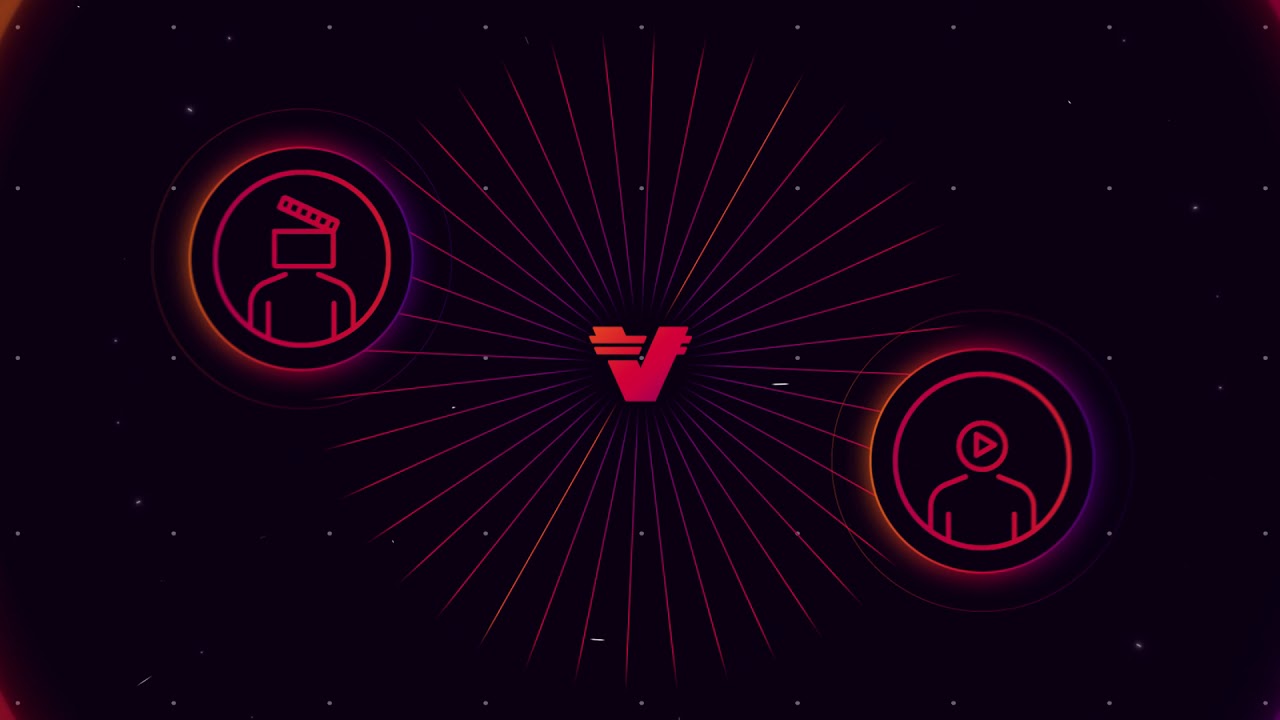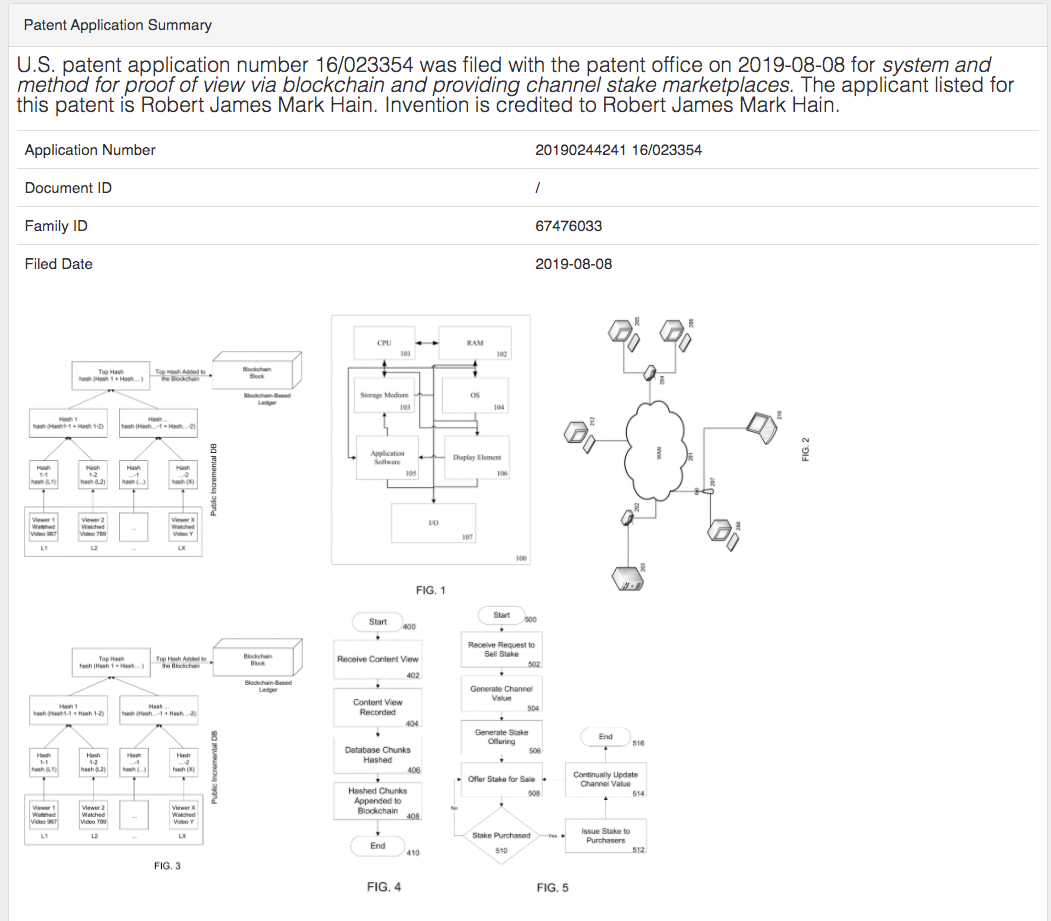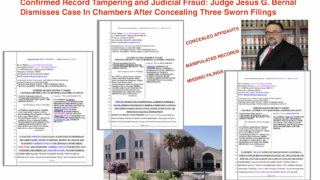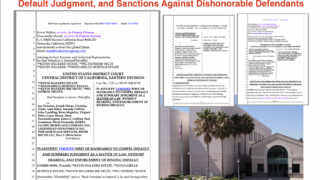
Verasity (VRA) Crypto Soon to be Issued Patent for “Proof of View” via Blockchain
The cryptocurrency Verasity (VRA) accomplishes a major milestone announcing on twitter that they have received a “notice of allowance” on a patent the submitted on June 29, 2018 for “System And Method For Proof Of View Via Blockchain And Providing Channel Stake Marketplaces.”
This patent will seemingly put Verasity in a very promising position, making it the go to project for implementing a much needed standard in the online digital space.
Verasity is trading at $00.042 at the time of writing this.
US Patent No 16/023,354

What is Verasity?
Verasity is a Protocol and Product Layer Platform for Esports and Video Entertainment
- VRA Rewards – Product Layer
- Proprietary Video Player – Product Layer
- Proprietary Adstack – Product Layer
- Proof of View (Patent Allowed 16/023,354) – Protocol Layer
- PoV is the only Protocol Layer patented technology for the blockchain
- VeraWallet – Product Layer Payment System
Verasity makes revenues from its use case esportsfightclub.com tournament platform with subscriptions, commissions on prize pools, video ad revenues and transaction fees. It will roll out its B2B products later in 2021.
Verasity Roadmap: verasity.io
Verasity Products: verasity.tv
Amazing news for Verasity. We have officially received the Notice of Allowance for US Patent No 16/023,354 for System and Method of Proof of View via Blockchain! 🎊🎉
This means the patent is granted and we will have the official patent number later this month. #crypto $VRA pic.twitter.com/aS8ljqcn8n
— Verasity (@verasitytech) February 4, 2021
Staking Offered for Verasity?
Yes there is staking and users can presently only stake using their vera wallet (https://app.verawallet.io/).
Verasity’s staking reward percentage is presently set at 25.5%.
VRA Rewards Product Layer is integrated for the following video players:

Where can you Buy Verasity?
Verasity is currently sold on my exchanges and KuCoin seems to be the safest and easiest entry point at the moment. Though KuCoin charges a pretty high 500 VRA transaction fee to withdrawl, which can become a lot, very fast.
What is a Notice of Allowance?
A Notice of Allowance is a document sent to a patent applicant from the United States Patent and Trademark Office (USPTO) after a patent examiner has decided to issue the requested patent. The Notice of Allowance comes after the inventor has turned in a patent application and provided all information about the invention. This information includes the patent’s description, design, drawings, or blueprints.
Since the Notice of Allowance shows the application is complete and meets all requirements, it is the final step in the long and complex patent application process. Your patent application has been fully reviewed and your invention has been given the green light for patenting. All that’s left is to pay remaining fees and send any drawing corrections.
When a USPTO examiner feels an invention qualifies for a patent, he or she prepares a Notice of Allowance. When mailed to the inventor, the notice’s mailing date is electronically recorded. If it will be published, the application requires both a publication and issue fee. Any fee requirements are listed in the Notice of Allowance. Applicants are also reminded to send an extra copy of the “Notice of Allowance and Fees Due” form when paying fees.
Once the issue fee has been paid, you’ll be sent an Issue Notification letting you know your patent number and its anticipated issue date. Any extra patent applications based on the original “parent” application will need to be filed before the parent patent issue.
Eighteen months or more after the patent application’s earliest filing date, the USPTO will publish the patent and it will be on public file.
What’s Included in a Notice of Allowance?
The notice of allowance consists of three sections: the header, section B, and a series of notes.
- The header identifies the inventor, the invention, and the patent case number.
- Section B identifies the fees due in order to complete the patent process. You must complete section B and return it to the USPTO within the specified timeframe.
- The series of notes included in the notice of allowance indicate the due date for any requested paperwork and fees.
Issuance of the Notice of Allowance
According to Section 13(b)(2) of the Trademark Act, the Notice of Allowance is provided if the application is not opposed. The notice is an intent-to-use application informing the inventor that the patent will be issued about eight weeks from the marked publishing date. The Notice of Allowance is important because its issue date establishes the priority date for filing a statement of use. The USPTO never publishes any information about a Notice of Allowance in the Official Gazette.
The information contained in the Notice of Allowance must be correct. Any errors should be pointed out as soon as possible. As an applicant, if you fail to file a statement of use on time or ask for an extension, the entire patent application will be abandoned.
Intent-to-Use Applications in Commerce
When a trademark is published under the applicant’s intention to use it in commerce but no one files an extension request or opposition, the USPTO will issue a notice of allowance about 12 weeks from the trademark’s publication date. As the applicant, you then have six months to use the trademark commercially and submit a statement of use or request a six-month extension.
The notice of allowance is an official written notification from the USPTO that your trademark survived the opposition period after publication in the Official Gazette and has been allowed. However, it doesn’t mean the trademark is registered yet. The notice of allowance is simply another step toward registration.
Why is a Notice of Allowance Important?
Not only does the Notice of Allowance tell the applicant that his or her patent will be issued, but it also requests specified issue fees be paid within three months from the allowance’s mailing date. Since the last deadline cannot be extended and failing to pay the fee results in losing the patent, the Notice of Allowance is a crucial document you’ll want to be on the lookout for. The total amount of fees you’ll need to pay varies depending on the type of patent and whether clarifications or amendments are needed.
The Notice of Allowance is so important that if it is returned to the USPTO for any reason, a new one is sent out with the file reflecting the new remailing date. The document also can’t be withheld if the inventor dies and the executor doesn’t intervene.
What Happens When an Applicant Files a Statement of Use or Extension on Time vs. When the Applicant Doesn’t?
Given that you have six months from the notice of allowance’s mailing date to file your statement of use or extension, you should proceed immediately after receiving the notice of allowance.
However, if you’re not currently using the mark in commerce on the services or goods listed in the application, you should file an extension request and required fees to avoid having your trademark abandoned. Extensions are given in six-month increments, so you must continue to file an extension every six months up to the maximum amount of five extension requests.
If you are using the trademark commercially, file the statement of use and all fees within six months of the notice of allowance. You cannot withdraw your statement of use, but you may file one extension request along with the statement of use to buy more time to overcome any deficiencies in your statement.
If you don’t file your extension request or statement of use on time, the application is no longer pending and you lose the trademark. To continue the application process, you’ll have to revive the application within two months of the abandonment date with a petition.










Comment (1)